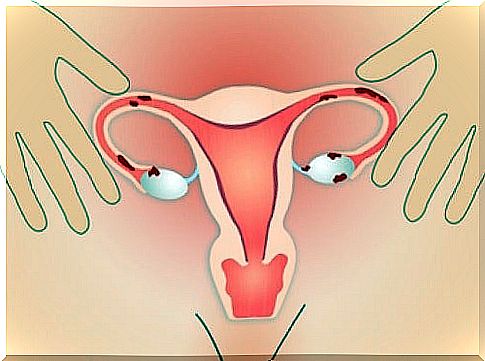Blood Clots During Menstruation: 5 Things You Should Know
Although it can be scary, the presence of blood clots is normal during menstruation in most women, it is also an aspect that we must monitor to see if it is associated with other types of symptoms.
It never hurts to consult this issue with our gynecologist. However, as the experts point out, each body is unique and each woman will experience her period in one way or another, and the presence of clots is not something that should necessarily alarm us. We give you all the data below.
What are blood clots during menstruation?
To better understand what those clots that we see from time to time throughout our menstrual period are, we have to take into account some aspects:
- The walls of our uterus usually change gradually to prepare the body for a possible pregnancy . They become thicker and are filled with new tissues with which, in the event of conception, to be able to house the fetus.

- In the absence of pregnancy, this layer formed in the uterine lining comes off little by little, thus forming the menstruation itself.
- As a general rule, when we suffer an injury, the blood tends to clot. It is a type of defense through which we avoid losing excess blood. However, during menstruation the blood needs to flow lightly to be expelled.
- Hence, the uterus generates an anticoagulant. If our menstruation is very abundant, that “natural coagulant” runs out and, therefore, the odd clot usually appears.
- These clots usually range between 5 mm and 4 cm, and are usually more common in women who have a heavier period. Those whose rules are somewhat lighter do not usually experience them.
- Another fact to keep in mind is that clots are usually more common while we sleep. The blood coagulates and these thicker and more striking masses tend to form, which sometimes frighten us. In the same way, it is normal for the rule to affect our rest.
What we should know about clots during menstruation
1. Iron deficiency
Iron deficiency in women is sometimes a real headache.
- It is common for an abundant rule to make us lose the levels of this mineral. However, the less iron there is in our body, the greater problems the uterus may have in generating the “natural anticoagulant” hence, iron deficiency anemia in turn generates more blood clots.
- For this reason, do not hesitate to do tests periodically to control iron levels and cover them in case of deficit with a supplement that your doctor recommends.
2. Small hormonal imbalances
It is common for both adolescents and women who have just given birth, to have flows with blood clots.
This is all due to small imbalances between estrogen and progesterone, something that could also occur a little before menopause.
3. A miscarriage
This is an aspect that we must take into account. If we are aiming to get pregnant and we notice that at one point a yellowish or grayish blood clot appears, sadly, it could be a miscarriage. If this happens, you should see a doctor immediately.
4. Endometriosis
Endometriosis is a silent disease suffered by millions of women. Something that we must bear in mind is that, if menstruation is excessively painful and disabling, it is possible that we suffer from this ailment.
- Endometriosis affects the female reproductive organs, and is characterized by the formation of a very dense lining around the uterus and other organs. All this causes pain, and it is common that during menstruation we see abundant blood clots.

5. Gynecological diseases
As we pointed out at the beginning, the presence of blood clots is common in many women. However, in case our periods are very painful, it is necessary to always consult the issue with our gynecologist.
- Pelvic inflammatory disease, for example, usually presents with deep abdominal pain in the pelvic area that is also related to the presence of blood clots during menstruation.
- This type of disease, caused by a type of bacteria, generates an infection from the cervix to the uterus, the fallopian tubes or the ovaries.
- It is painful and is one of the most common gynecological ailments, so it is important that in case of any doubt or discomfort, we consult professionals.
It is also known that the presence of fibroids or cysts is also related to clots during menstruation. So, although these clots are normal, it never hurts to go to our annual check-ups.









